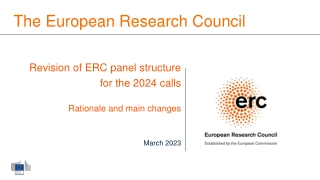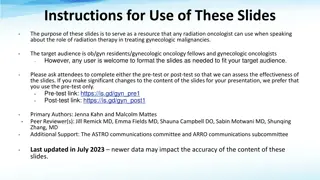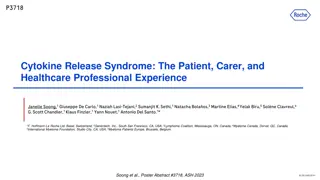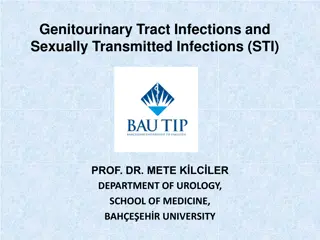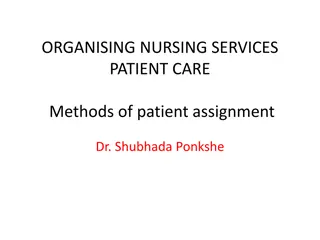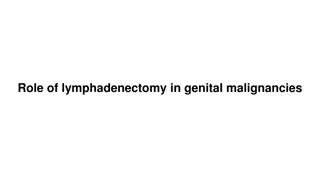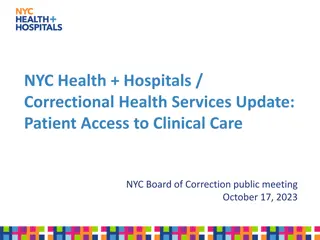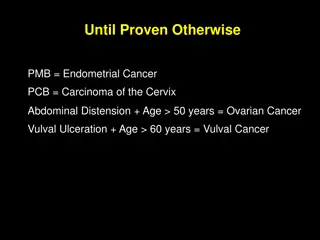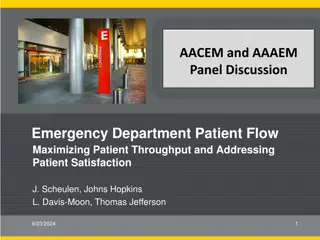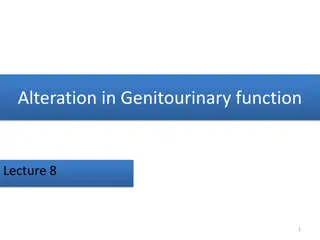Patient-Based Panel Discussion Genitourinary Malignancies
A patient panel discussion on genitourinary malignancies featuring Drs. Brown, Nazha, Master, Carthon, Atkins, and Bilen, with a case presented by Emory University Heme-Onc fellow Sarah J.
Download Presentation

Please find below an Image/Link to download the presentation.
The content on the website is provided AS IS for your information and personal use only. It may not be sold, licensed, or shared on other websites without obtaining consent from the author.If you encounter any issues during the download, it is possible that the publisher has removed the file from their server.
You are allowed to download the files provided on this website for personal or commercial use, subject to the condition that they are used lawfully. All files are the property of their respective owners.
The content on the website is provided AS IS for your information and personal use only. It may not be sold, licensed, or shared on other websites without obtaining consent from the author.
E N D
Presentation Transcript
Patient-Based Panel Discussion Genitourinary Malignancies All Speakers: Drs. Brown, Nazha, Master, Carthon, Atkins, & Bilen Case presented by Emory University Heme-Onc fellow: Sarah J. Wood, MD July 20th, 2023
Hospital Course A 66-yo M with PMHx of HTN, HLD, and T2DM presents to the ED with complaints of back pain. There, cross-sectional imaging revealed multiple sclerotic lesions throughout the axial and appendicular skeleton, along with multiple enlarged RP lymph nodes. He was admitted to HSM for further work-up. His physical examination on admission revealed normal lower extremity strength and sensation. The patient denied any bowel / bladder dysfunction. Labs on initial presentation to the hospital notable for Hgb 11 g /dL, Calcium 11 prompting HSM to pursue myeloma work-up, which resulted as normal. Other organ function within normal limit. Oncology was consulted for further evaluation. We recommended dedicated spine imaging, PSA, and lymph node biopsy. PSA resulted at 76 ng/mL. Subseuqently, NM Bone Scan was recommended to complete staging. 2 WINSHIP CANCER INSTITUTE OF EMORY UNIVERSITY NCI Designated Comprehensive Cancer Center
Hospital Course MRI T & L spine w/and w/o contrast demonstrated extensive bony changes with multiple sclerotic bone lesions throughout vertebral bodies and redemonstration of RP LAD. Bone scan with diffusely distributed foci of radiotracer uptake throughout calvarium, spine, sacrum, bilateral proximal femurs, proximal humeri and bilateral ribs. LN biopsy was obtained by IR, which confirmed metastatic prostate adenocarcinoma. The patient s pain was controlled with oral analgesia and was discharged with bicalutamide and clinic follow up. 3 WINSHIP CANCER INSTITUTE OF EMORY UNIVERSITY NCI Designated Comprehensive Cancer Center
Clinic follow-up He then presents to your office for NPV where you begin androgen deprivation therapy with six cycles of docetaxel chemotherapy. You also refer to rad-onc where he receives palliative radiation to spine. He tolerates chemotherapy well. Following completion, PSA nadir is 3.0 ng/mL. Over the next four months, PSA level begins to rise to 7.4 ng / mL, then to 13 ng / mL. PSMA PET shows multiple intensely PSMA avid osseous lesions involving the axial and appendicular skeleton, compatible with osseous metastasis. No visceral organ involvement. You order NGS on prior tissue biopsy and refer to genetic counseling for germline testing. Subsequent germline testing revealed a PALB2 mutation. At time of progression, he maintains excellent PS and normal CBC parameters. 4 WINSHIP CANCER INSTITUTE OF EMORY UNIVERSITY NCI Designated Comprehensive Cancer Center
Panel Discussion 1) In this patient - a 66 yo M w/ few medical comorbidities and significant osseous disease with symptoms - would you have considered triplet therapy up-front? If so, can you walk us through your decision when choosing between PEACE-1 (abi/pred, docetaxel, ADT) versus ARASENs (darolutamide, docetaxel, ADT)? 2) At time of PD, with germline testing revealing a PALB2 mutation, a known mutation resulting in homolougous repair deficiency (HRD), what would you implement as second line therapy given recent TALO-2 (talazoparib plus enzalutamide) and PROPEL (abiraterone plus olaparib) data? Thank you 5 WINSHIP CANCER INSTITUTE OF EMORY UNIVERSITY NCI Designated Comprehensive Cancer Center



